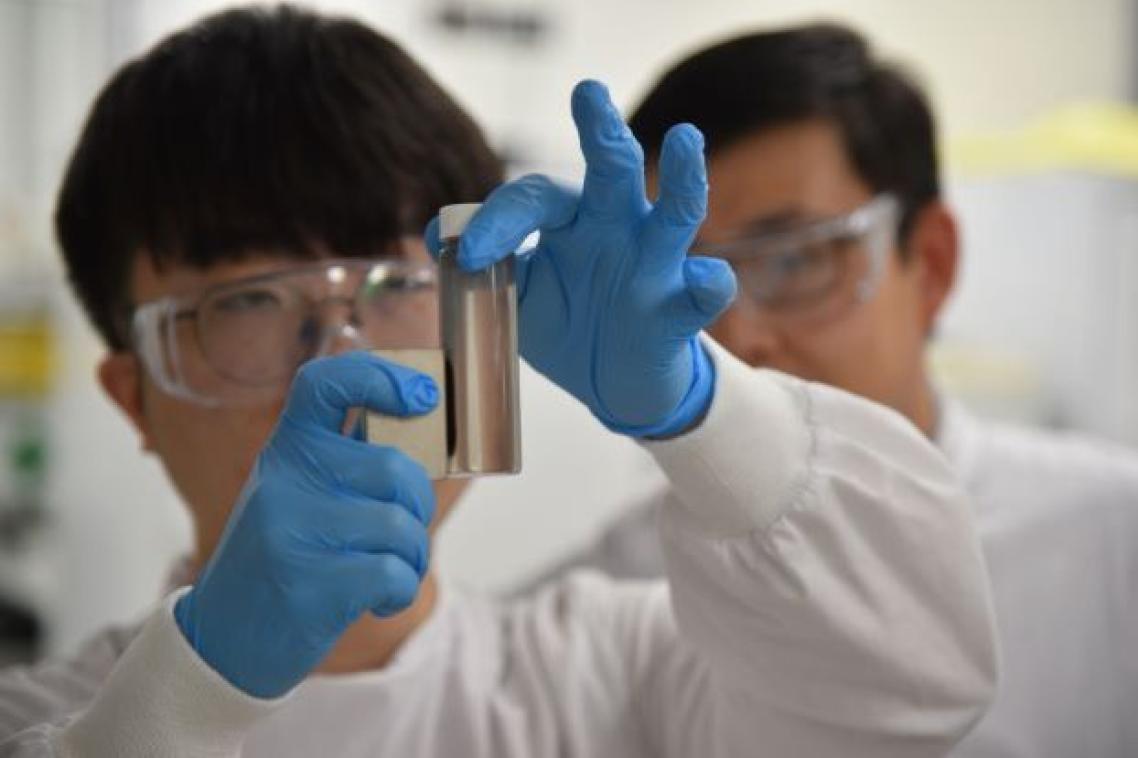Magnetic method to clean PFAS contaminated water

PhD candidate Xiao Tan holds a magnet attracting PFAS particles, watched by Dr Cheng Zhang.
Researchers at The University of Queensland have pioneered a simple, fast and effective technique to remove PFAS chemicals from water.
Using a magnet and a reusable absorption aid that they developed, polymer chemist Dr Cheng Zhang and PhD candidate Xiao Tan at the Australian Institute for Bioengineering and Nanotechnology have cleared 95 per cent of per- and polyfluoroalkyl substances (PFAS) from a small amount of contaminated water in under a minute.
“Removing PFAS chemicals from contaminated waters is urgently needed to safeguard public and environmental health,” Dr Zhang said.
“But existing methods require machinery like pumps, take a lot of time and need their own power source.
“Our method shows it is possible to remove more of these chemicals in a way that is faster, cheaper, cleaner, and very simple.
“Because our process does not need electricity, it can be used in remote and off-grid communities.”
PFAS substances are synthetic compounds used in industry and consumer products since the 1950s, but they persist in the environment potentially leading to human health problems.
The PFAS removal technique developed by Dr Zhang and Mr Tan involves treating contaminated water with a new solution, called a magnetic fluorinated polymer sorbent.
“This solution that we developed coats the PFAS particles and then we can use a magnet to attract, isolate and remove them,” Dr Zhang said.
“The solution itself can be reused up to 10 times.
“Our team will now scale up the testing and we hope to have a commercially available product ready in the next three years.”
The work has been funded by the Australian Research Council, the National Health and Medical Research Council, The Chemours Company and the US Department of Defense, and was overseen by AIBN head of research Professor Andrew Whittaker.
The study has been published in Angewandte Chemie.
Related articles

Anyone can be a hacker with AI – so what does that mean for the cyber defence industry?

Brazil claims to be an environmental leader. Are they?
Media contact
UQ Communications
communications@uq.edu.au
+61 429 056 139

